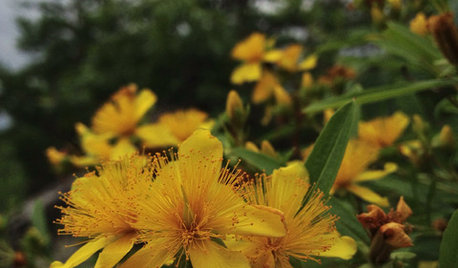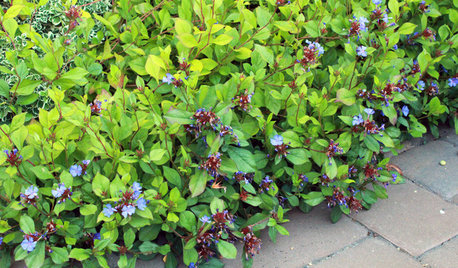St. Augustine problems
schwaa
13 years ago
Related Stories

DECORATING GUIDESCity View: History Meets Modern Tastes in St. Louis
This Missouri city celebrates a heritage that goes way back, but its architecture and interiors are moving decidedly forward
Full Story
GARDENING GUIDESHypericum Prolificum Brings the Best of St. Johnswort to the Garden
This eastern North American species pairs bright yellow summer flowers with compact shrubbery
Full Story
CONTEMPORARY HOMESHouzz Tour: Outdoor Spirit in St. Louis
With a pool and central patio, this Missouri home on 3 lots lures everyone outside despite the handsome interiors
Full Story
DECORATING GUIDES21st-Century Looks for Shabby Chic Fans
How to update a style that's been popular since the 1990s? With new colors, crisper lines and contemporary settings
Full Story
BATHROOM MAKEOVERS21st-Century Amenities for an Old-Time Show House Bath
Updated but appropriate features help an old-fashioned bath in the 2014 DC Design House align with modern tastes
Full Story
INSIDE HOUZZThere’s a Party in the Backyard, Says a Houzz Landscaping Survey
Entertaining, growing edibles and solving problems are goals for homeowners planning to revamp their yards
Full Story
GARDENING GUIDESGreat Design Plant: Plumbago
A multifacted ground cover with an enormous range, plumbago solves landscape problems with panache
Full Story
CONTEMPORARY HOMESHouzz Tour: Remaking a Penthouse in a Gothic London Landmark
Step inside a renovated luxury apartment in London’s St. Pancras Chambers
Full Story
HOUZZ TOURSMy Houzz: Warm Walnut Rules in an Open-Concept Canadian Home
Traditional takes a turn for the modern in this remodeled St. John's home, newly focused on clean lines and sleek finishes
Full Story
DECORATING GUIDES10 Ways to Update a Victorian Living Room
Bring your period living room sensitively into the 21st century with these simple yet effective design tricks
Full StorySponsored






dogwind
organic_meryl
Related Professionals
Citrus Heights Landscape Architects & Landscape Designers · Beavercreek Landscape Architects & Landscape Designers · Fairview Landscape Contractors · Fishers Landscape Contractors · Riverhead Landscape Contractors · San Benito Landscape Contractors · Uxbridge Landscape Contractors · Middle Island Driveway Installation & Maintenance · New River Driveway Installation & Maintenance · Folsom Swimming Pool Builders · La Verne Swimming Pool Builders · West Chester Swimming Pool Builders · Long Beach Fence Contractors · Tucson Fence Contractors · Castaic Fence Contractorsdchall_san_antonio